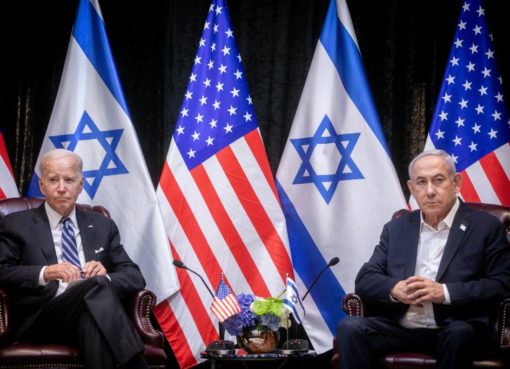Warning: This post contains spoilers for Wonka.
More than 50 years after Gene Wilder first brought the iconic character of Willy Wonka to the big screen in Willy Wonka and the Chocolate Factory, Timothée Chalamet has reprised the role of the eccentric chocolatier for a spiritual prequel to the 1971 classic.
In Wonka, in theaters Dec. 15, Chalamet portrays Wonka at the very beginning of his illustrious career as the most famous candymaker in the world—around 25 years before the events of Roald Dahl’s 1964 book Charlie and the Chocolate Factory, on which the original movie is based. After seven years on the seven seas gathering ingredients and honing his craft, Chalamet’s Wonka must contend with the Chocolate Cartel—a trio of corrupt candy tycoons—as well as a few other Dahl-esque villains in order to achieve his dream of opening a store in the heart of the upscale shopping district known as the Galeries Gourmet. The movie is filled with nods to Dahl’s original story, from the introduction of rival candymaker Arthur Slugworth (Paterson Joseph) to Wonka’s first encounter with a golden ticket.
Director and co-writer Dave King, the filmmaker behind the beloved live-action Paddington movies, told Entertainment Weekly that he worked with the Roald Dahl Story Company to explore the late author’s unpublished archives and gain inspiration for young Wonka’s story arc.
“It felt like an area that Roald Dahl was always exploring,” King said. “He had a try writing a few stories and a few ideas. None of them ever quite hit his quality control threshold, I don’t think, but it felt like he felt there was a life to Willy Wonka beyond Charlie and the Chocolate Factory and [sequel book] The Great Glass Elevator.”
While Dahl never published a standalone backstory for Wonka, his books alluded to elements of Wonka’s earlier adventures—particularly with regard to how Wonka came to employ the Oompa-Loompas.
Here’s how Wonka draws inspiration from but ultimately differs from Dahl’s source material.
The Oompa-Loompa controversy
After several mentions of a “little orange man” who comes in the night to steal Wonka’s candy creations, Wonka introduces its pint-sized version of Dahl’s infamous Oompa-Loompas—Hugh Grant’s Lofty.
When Wonka finally manages to catch Lofty in the act, the latter explains that the candymaker took several precious cocoa beans from Loompaland—an uncharted island in an unnamed sea—while Lofty was supposed to be guarding them. Lofty was banished from Loompaland as a result and has been stealing from Wonka to repay his debts ever since.
By the end of the movie, Wonka and Lofty not only make nice, but Lofty also saves Wonka and his young friend Noodle (Calah Lane) from drowning in a giant vat of melted chocolate. Wonka then offers a Lofty a job as head of the tasting department at his new factory.
This narrative steers clear of the more problematic aspects of Dahl’s original portrayal of the Oompa-Loompas. The first edition of Charlie and the Chocolate Factory depicted the Oompa-Loompas as a tribe of African Pygmy people whom Wonka shipped to England “in large packing cases with holes in them” to work forever in his factory in exchange for cocoa beans—a description that perpetuated deeply racist ideologies.
“In the 1964 book, Wonka explains that he found the Oompa-Loompas ‘in the very deepest and darkest part of the African jungle where no white man had ever been before.’ They were near starvation, living on vile caterpillars, so Wonka smuggled them to England for their own good,” journalist Livia Gershon wrote in 2020 for JSTOR Daily, going on to describe how the book eventually came under fire in the U.S. “The wildly colonialist stereotyping apparently received little pushback until 1971, when plans were announced for a U.S. movie version of the book.”
Even after the NAACP objected to the forthcoming film on the grounds that the book was racist, Dahl was apparently reluctant to rewrite his characterization of the Oompa-Loompas. But he did ultimately revise Charlie and the Chocolate Factory, publishing a new edition in 1973 in which the knee-high Oompa-Loompas were “long-haired, rosy-cheeked, and white, hailing from the island of Loompaland.”
In the 1971 movie, directed by Mel Stuart, the Oompa-Loompas were depicted as little people with orange skin and green hair. Wilder’s Wonka tells Charlie and the rest of the golden ticket winners that he transported the entire population of Oompa-Loompas to his factory “in the greatest of secrecy” so that they could live in “peace and safety” away from the vicious beasts of Loompaland. He makes no mention of how they’re compensated for their labor.
Nearly 35 years later, director Tim Burton’s 2005 adaptation of Dahl’s book—starring Johnny Depp as Wonka—reimagined the Oompa-Loompas as small, identical workers who were all played by actor Deep Roy. The movie saw Depp’s Wonka flash back to his journey to the “terrible country” of Loompaland, where he discovered the primitive-coded Oompa-Loompas dining on nothing but caterpillars while worshipping cocoa beans. Wonka explains that he made a deal with the chief Oompa-Loompa to have his people come work in the factory by offering to pay them in cocoa beans, harkening back to Dahl’s original text.
Criticism of Wonka‘s portrayal
While Wonka avoids the racial implications of Dahl’s story, Hugh Grant’s casting as Lofty has been met with some backlash. In July, George Coppen, a British actor with dwarfism, told BBC News that he felt the role should’ve gone to someone with the condition. Actors with dwarfism played the Oompa-Loompas in both the 1971 and 2005 films.
“A lot of actors [with dwarfism] feel like we are being pushed out of the industry we love,” he said. “A lot of people, myself included, argue that dwarfs should be offered everyday roles in dramas and soaps, but we aren’t getting offered those roles. One door is being closed but they have forgotten to open the next one.”
There are varying opinions within the community of actors with dwarfism about their historical typecasting in often reductive bit parts. But Coppen told the Washington Post that the option to take those types of roles should still be there.
“Personally, if my agent had texted me saying, ‘Would you be up for auditioning for an Oompa-Loompa?,’ I would have jumped at the chance,” he said. “But this is our choice, whether we want to do these jobs. People who can’t relate to us in any way deciding for us? No. We’ve got a voice just like you have. Let us choose.”
In November, King defended his casting choice to the BBC. “Dahl describes [the Oompa-Loompas] as no higher than my knee or about the size of a medium-size doll,” he said. “We tried to use the iconic look that they came up with in the 1971 movie with the green hair and the orange skin, and merge that with the way Dahl described them, in a way I think they may have done, had they had the technology we have today.”




